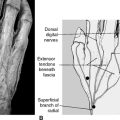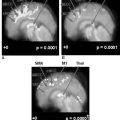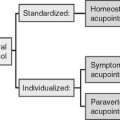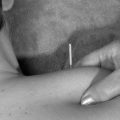CHAPTER 14 Acupuncture Therapy in Sports Medicine
THE DIFFERENCE BETWEEN TREATING PROFESSIONAL AND AMATEUR ATHLETES
When a professional athlete is injured, the tight schedules of training and competition usually prevent the dedication of sufficient time to achieve proper healing, even in the case of a minor injury. Because of this some professional athletes start to perform again before they are fully recovered. The athletes and their coaches try to find a quick fix such as painkillers or steroid injections. But there is no such quick fix. As a result, minor injuries become chronic, and the damage can spread to other tissues. Consequently, many professional athletes have to live with chronic pain or, in some cases, they become disabled, threatening their entire athletic career.
NO QUICK FIX FOR SPORTS INJURIES
Muscle has an important physiologic character: it has a memory of its injury. After an injured or sick muscle is properly treated and recovers, the pain disappears and the flexibility of the muscle fibers is restored, but the memory of the injury will stay for a much longer time, depending on the severity of the injury. As long as the healed muscle retains the memory of its injury, it becomes fatigued and weaker faster and is liable to produce pain and injury again if exposed to the same repetitive overuse. It takes time and a conscious effort toward restraint to erase a muscle’s memory of its injury. Athletes with acute muscle pain should not ignore the memory factor, which is an important part of muscle rehabilitation.
USING ACUPUNCTURE FOR INJURY PREVENTION AND IMPROVEMENT OF PHYSICAL PERFORMANCE
These injured muscles are the weakest muscles in an athlete’s body. They disturb the coordination of synchronous muscle movements and cause misalignment of the joints. If the injured muscles are continuously forced to move, they will share the injury with neighboring muscles and tendons in order to protect themselves. As a result, muscle activities are handicapped and even a minor activity can then create a physical injury.
TREATING SOFT TISSUE DISORDERS IN SPORTS MEDICINE
There are many patients who are suffering from the side effects of drugs (such as long-term use of steroid medication) or the consequences of unnecessary surgery, who could have benefited from acupuncture. Many of the side effects of conventional medical intervention can be avoided or reduced when acupuncture is used alone or in combination with other procedures.
Dr. Alec Meleger of the Harvard Medical School Physical Medicine and Rehabilitation program and Dr. Joanne Borg-Stein of the Tufts Medical School Physical Medicine and Rehabilitation department conducted an in-depth review of published studies on using acupuncture in sports medicine. The review paper by Drs. Meleger and Borg-Stein1 provided objective data to support the clinical value of using acupuncture for soft tissue disorders in sports medicine.
Acupuncture needling (dry needles) and steroid injections (wet needles) have similar therapeutic efficacy as suggested by Dr. David G. Simons.2 “Dry needling is as effective as injection of an anesthetic for relief of trigger point symptoms” as long as the dry needling can precisely target the trigger point.
In other research, Dr. Chilton3 reported a higher success rate with acupuncture and steroids versus steroid-only treatment. We believe, too, that a combination of acupuncture needling and steroid injections provides better results than injections alone because acupuncture can be used for breaking all the tender points detected during a treatment whereas one can make only a limited number of steroid injections in any one treatment. Acupuncture stimulates the natural antiinflammatory process in the body and can be used repeatedly to deactivate muscle and fascia contracture. Thus, acupuncture needling can continue to be used during follow-up treatments without any side effects.
1 Meleger A, Borg-Stein J. Acupuncture and sports medicine: a review of published studies. Medical acupuncture. 11(2, Fall), 1999/Winter, 2000.
2 Simons DG, Travell JG, Simons LS. Travell & Simons’ myofascial pain and dysfunction: the trigger point manual, vol 1. Philadelphia: Lippincott Williams & Wilkins. 1999:151.
3 Chilton SA. Tennis elbow: a combined approach using acupuncture and local corticosteroid injection. Acupuncture Med. 1997;15(2):77-78.






